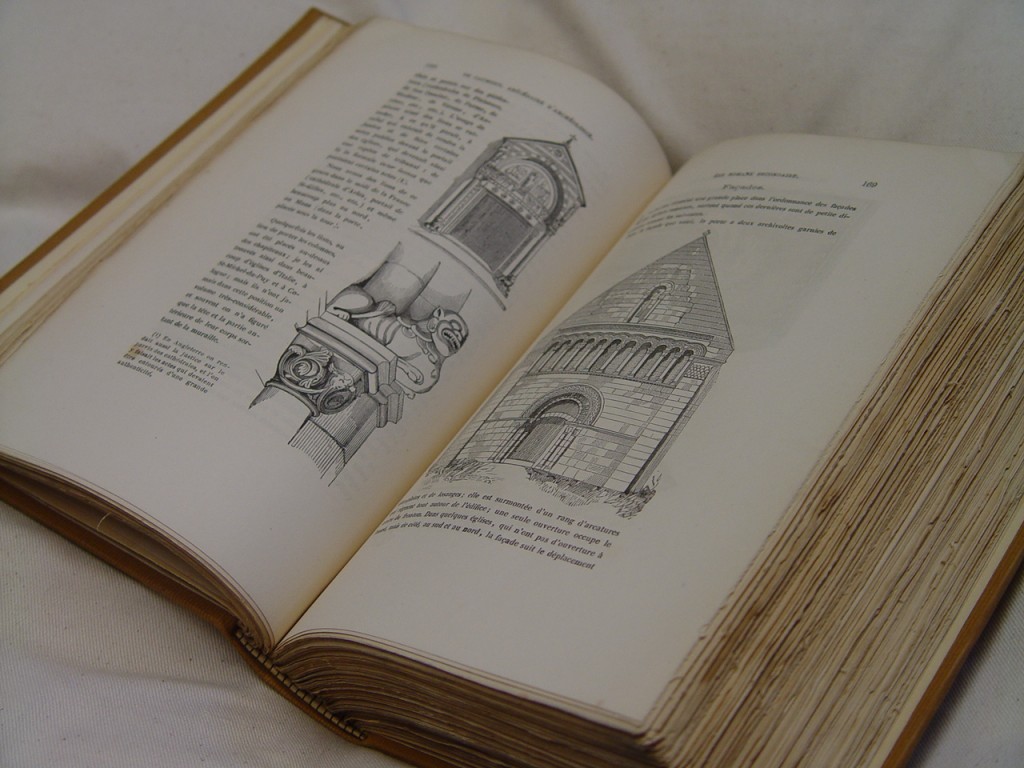Caumont, Arcisse de. Abécédaire; ou Rudiment d’Archéologie: Architecture Religieuse. 5th ed. Paris: Derache, 1886
In this French-language text, Arcisse de Caumont imagines medieval architecture as an aberrant rupture in the history of architecture in France. Situated outside the dominate classicist paradigm which flanks the period, Caumont perceives Middle Age architectural objects as degenerate. He classifies buildings according to two major eras which he terms ère romane and ère ogivale, further subdividing these categories into three epochs that express the initial moments of each in pejorative terms (terming one primordiale and, the other, primitive). This language denotes a specific attitude about the medieval period that might be reflected in contemporary literature.
As a reference work, Rudiment d’Archéologie provides access to a number of woodcuts that document buildings and architectural elements in varying states of decay. The images proliferated in this text demonstrate the specific iconographic concerns of medieval religious architecture and suggest a relationship with their architectural milieu.
The notion of aberrance is perhaps the most interesting historiographical element in this otherwise linear narrative documenting the iconographic in medieval architecture.That this degeneracy is so duly noted and then supplemented with visual expressions of space in ruin creates a curious dialectic.
Collection: Cret
Library of Congress call number: NA 1041 C376 1886


